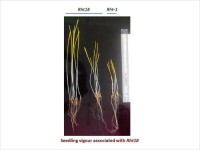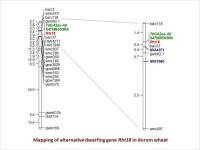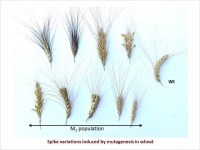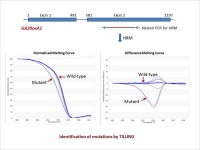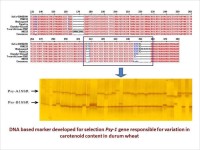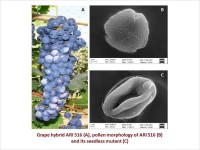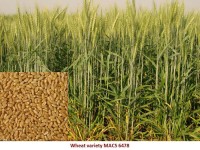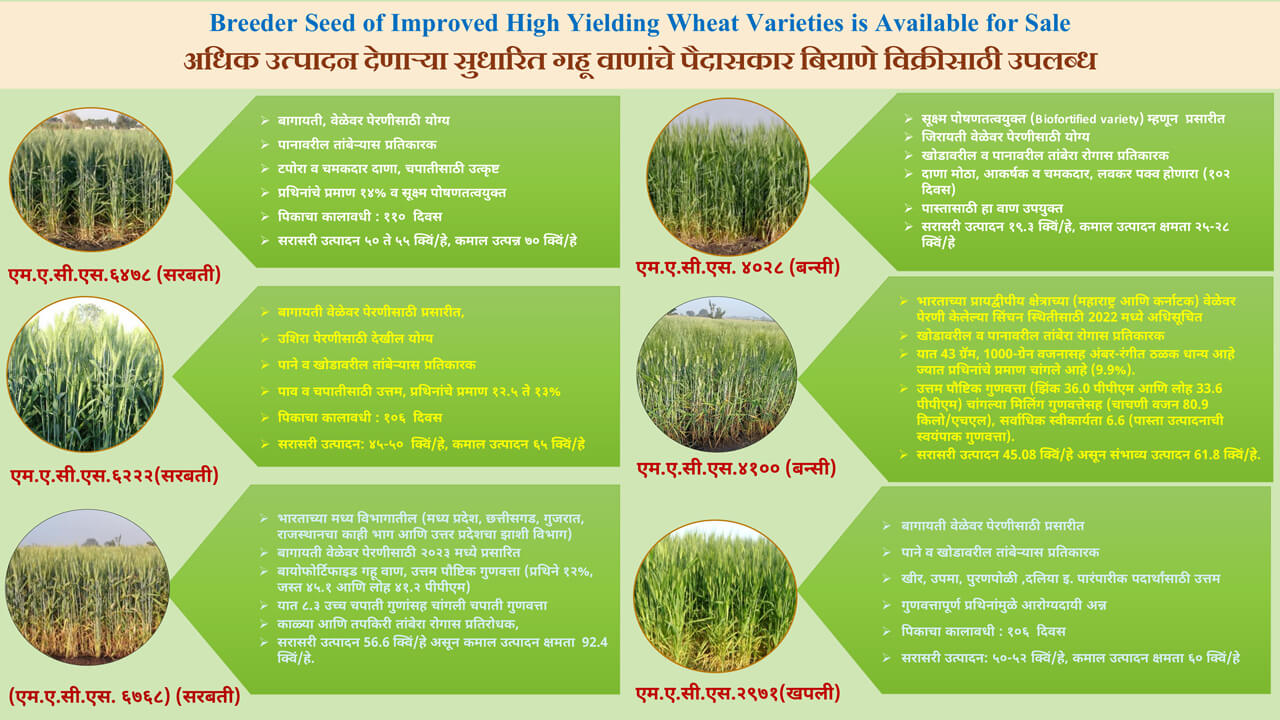
Google Scholar / Social Media
Name : Dr. Ravindra Patil
Designation : Scientist – E
Brief Background :
- Associated with All India Wheat and Barley Improvement Project during 2005 to 2013
- Contributed to development of four high yielding disease resistance wheat varieties for cultivation in Peninsular Zone
- PhD thesis- End use quality characterization of durum wheat using molecular markers
- Student and Early Career Award from INRA, Clermont-Ferrand, France, during ŌĆś19th International Triticeae Mapping Initiative ŌĆō 3rd COST Tritigen Joint MeetingŌĆÖ held in Clermont-Ferrand, France, during Aug 31 ŌĆō Sep 4, 2009
- Qualified CSIR-UGC NET (LS) in 2003 and 2004
- NCL-University of Pune Scholarship during 1998-2000
Contact Details :
+91-20-25325095
- M. Sc. (Biochemistry), University of Pune
- Ph.D. (Biotechnology), University of Pune
Development of semidwarf wheat with improved seedling vigour
Alternative dwarfing genes in wheat have their effect restricted to stem elongation while retaining longer coleoptile and improved seedling vigour. Wheat with alternative dwarfing genes will be less affected by left-over crop residues, thereby reducing incidences of stubble burning. We have mapped alternative dwarfing genesRht14 and Rht18 wheat. We aim to transfer these genes in Indian wheat cultivars to develop semidwarf wheat with improved seedling vigour.
In a reverse genetic approach, an EMS-induced mutants of durum wheat are being explored to identify mutants for genes involved in gibberellin biosynthesis. It is hypothesized that such mutants will produce GA-deficient semidwarf phenotype with improved seedling vigour.
Resistance to spot blotch and stem rust in durum wheat
Foliar diseases including spotblotch and stem rust have emerged as potential threat to wheat production particularly in South Asia. Host resistance is consideredthe best option for combating diseases. We aim to identify genes/QTL for resistance to spot blotch and stem rust in durum wheat. Markers linked to the identified genes/QTL will be useful in wheat improvement programme.
Improvement of micronutrient content in durum wheat
Genetic biofortification of wheat is a cost-effective and sustainable solution to overcome nutritional deficiency. We aim to dissect genetic components at molecular level and developing highly efficient wheat genotype for micro-nutrients absorption and accumulation in grains.
┬ĀGenetics of seedlessness in grapes
There is an increasing demand by the consumers for seedless grape for fresh and dry fruit consumption. Investigation of molecular basis of seedlessness will enhance the current understanding of grape seed development and shed light on the possible mechanism by which grape seed formation is controlled.
Our research work is funded by-
- Department of Science and Technology, India
- Science and Engineering Research Board, India
- National Agricultural Research Fund (IACR), India
- Department of Biotechnology, India
- Parimal Vikhe, Suhasini Venkatesan, Ajit Chavan, Shubhada Tamhankar, Ravindra Patil (2019) Mapping of dwarfing gene Rht14 in durum wheat and its effect on seedling vigor, internode length and plant height. The Crop Journal, 7: 187-197
- Ravindra Patil, Manoj Oak, Anuja Deshpande, Shubhada Tamhankar (2018) Development of a robust marker for Psy-1 homoeologs and its application in improvement of yellow pigment content in durum wheat. Molecular Breeding, 38:136
- Neha Rai, B. Amasiddha, Nivedita Sinha, Tapas Ranjan Das, Ravi Patil, Harikrishna, Neelu Jain, G. P. Singh, P. K. Singh, Suresh Chand, K. Vinod Prabhu (2018) Physiological and morphological evaluation of MABB derived lines under drought stress in bread wheat (Triticum aestivum em. Thell.) Indian J. Genet., 78(4): 417-425
- Parimal Vikhe, Ravindra Patil, Ajit Chavan, Manoj Oak, Shubhada Tamhankar (2017) Mapping gibberellin-sensitive dwarfing locus Rht18 in durum wheat and development of SSR and SNP markers for selection in breeding. Molecular Breeding 37: 28 Pages 1-10.
- Patil RM, Tamhankar S A, Oak MD, Raut AL, Honrao BK, Rao VS (2013) Mapping of QTL for agronomic traits and kernel characters in durum wheat (Triticum durum Desf.). Euphytica, 190:117-129.
- Oak MD, Patil RM, Bankar DN, Bagwan JH, Bipinraj AL, Tamhankar SA, Honrao BK and Misra SC (2011) Performance of durum wheat lines for quality and rust resistance. Journal of Wheat Research 3: 71-72.
- Misra SC, Honrao BK, Bhagwat MD, Chavan AM, Khade VM, Surve VD, Patil RM, Bagwan J, Bankar DN (2010) MACS 2971: A new dicoccum wheat variety. Indian Journal of Genetics and Plant Breeding 70: 307.
- RM Patil, MD Oak, SA Tamhankar, VS Rao (2009) Molecular mapping of QTLs for gluten strength as measured by sedimentation volume and mixograph in durum wheat (Triticum turgidum L. ssp durum). Journal of Cereal Science, 49: 378ŌĆō386.
- Patil RM, Oak MD, Tamhankar SA, Sourdille P, Rao VS, (2008) Mapping and validation of a major QTL for yellow pigment content on 7AL in durum wheat (Triticum turgidum L. ssp durum). Molecular Breeding 21:485ŌĆō496.
- Patil RM, Oak MD, Tamhankar SA, Rao VS, (2006) Identification of gluten protein subunits and their PCR amplified products related to products related to sedimentation volume in durum wheat. Journal of Plant Biochemistry and Biotechnology 15: 47-50.
┬ĀWheat Varieties
- MACS 4058: New durum wheat variety developed for cultivation under restricted irrigation conditions in Peninsular Zone (2020). The variety has been tagged as biofortified wheat variety by ICAR, India.
- MACS 6478: High yielding bread wheat variety developed for cultivation under timely sown irrigated conditions in Peninsular Zone (2014).
- MACS 6222: High yielding bread wheat variety developed for cultivation under timely sown irrigated conditions in Peninsular Zone (2010).
- MACS 2971: High yielding dicoccum wheat variety developed for cultivation under timely sown irrigated conditions in Peninsular Zone (2009).




